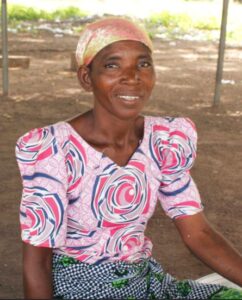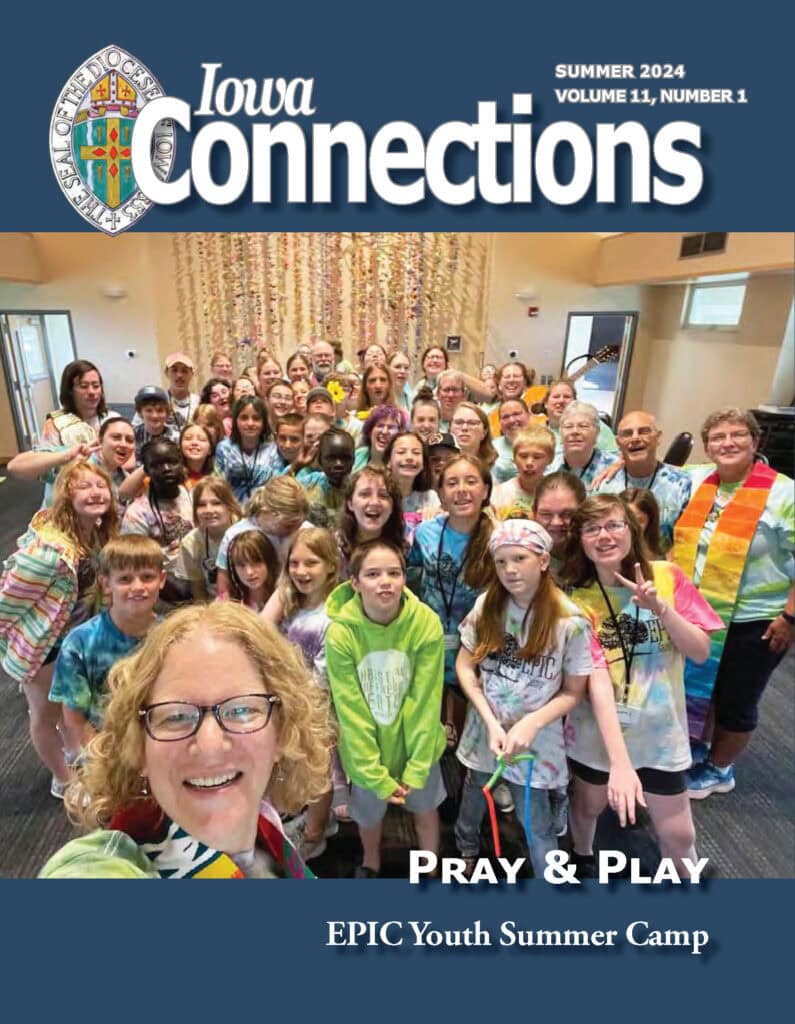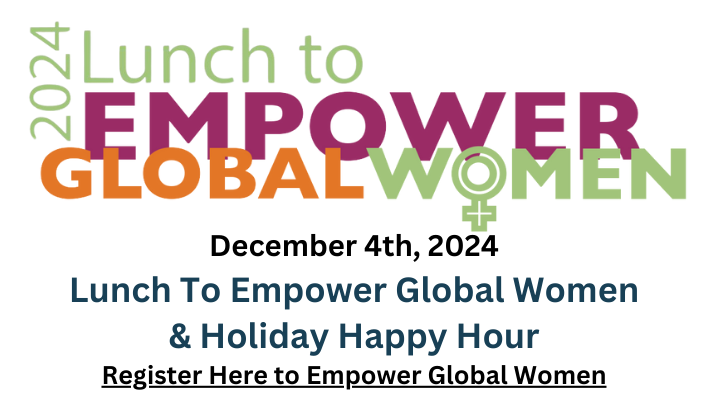Joe and Esther Legg Make A Difference in Ghana
 The Self-Help International community mourns the recent loss of Joe Legg, longtime emeritus member of the Board of Directors. Self-Help is very grateful to the Leggs for their commitment to the organization’s mission and to the people it serves. Below is a guest post written by Joe’s wife, Esther, detailing their work with Self-Help in Ghana in the 1990s.
The Self-Help International community mourns the recent loss of Joe Legg, longtime emeritus member of the Board of Directors. Self-Help is very grateful to the Leggs for their commitment to the organization’s mission and to the people it serves. Below is a guest post written by Joe’s wife, Esther, detailing their work with Self-Help in Ghana in the 1990s.
Yes, ordinary people can contribute to an international project and make a difference. This example can be seen in the work of Joe and Esther Legg who made seven trips to Ghana in the 1990s. Joe was a retired County Extension Agent. Esther was a Home Economist. At age 63 & 64, they volunteered their time and talent during multiple 3-4 week visits to the villages of Enyanese and Fufu, Ghana, West Africa. Relationships and trust were important. Because of the return visits and personal connections, they were able to make a very positive impact on two villages. The health and self-sufficiency of the residents was greatly improved in the 1990s. For Joe and Esther, it was important work and it fulfilled a personal yearning to help people build a better life.
How did this involvement and partnership begin? It all started through a chance encounter when they met Lewellyn Hille, director of Self Help, at an airport in Amsterdam in 1989! He was from Iowa. They were from Iowa. He invited them to go to Ghana. They agreed tentatively agreed go and to help a village of farming families. The first trip was in 1991.
Ghana had been surviving decades of challenges: (1) the government was transitioning to “democracy”, (2) there was a significant drought in 1983 that brought wildfires and crop lost and extreme famine. It was a crisis severe enough to be noticed throughout the world. (3) In addition, the Nigerian government expelled about 1 million Ghanaians sending them back to Ghana: a xenophobic behavior.
Aid was sent from many countries. Several non-profits partnered with the US State Department to provide assistance. The Self-Help International Foundation, headquartered in Iowa, was once such organization. Their mission was to alleviate hunger by helping people help themselves.
Problem 1: Transportation
Outside the urban areas, Ghana was mainly a “footpath economy”. Farmers (men and women) spent much of their time head loading supplies, crops, and essentials from fields to villages and from villages to market and the reverse. This human porterage severely limited production and increased marketing costs.
In Waverly, Iowa, Vern Schield was an industrialist. He invented and donated a small sturdy tractor called the “Self-Helper”. The village only had a two-wheeled cart. The motorized tractor was a huge improvement. In 1991, Joe and Esther Legg made their first trip to Ghana, to the village of Enyanese, situated in a rural area, just 10-15 miles north of Cape Coast. One of these small tractors arrived during their visit. During their 3-4 week stay, their assignment was to train several village members to drive and maintain this new resource. In a neighboring village, many years before, France had donated a tractor, but when it broke in the field, there was no one to fix it. It became weathered and dilapidated in its place. Self-Help wanted to provide the training and follow-up, to assure their donation continued to make a positive improvement to the village.
Joe trained three men and one woman to drive and maintain the tractor. Gas was available in Cape Coast, approximately 10 miles away. Usually they would plan ahead and buy gas when in town. There were a few times in the beginning when they had to fetch gas in a 2-gallon bucket. The villagers had some tools, but Joe and Esther also brought the tools and resources needed for typical repairs. These are examples of what they were taught:
- Complete a checklist to make sure tires, brakes, and steering are operational before making a trip to the city or fields.
- Have a time schedule for lubrication and specify the type of lubrication needed.
- Never overload the machine.
- Make minor repairs before they result in a major breakdown.
- Keep the machine clean and protected from weather.
One time they used the tractor to take a pregnant woman to the hospital. During the second visit, Joe built a cart to be pulled behind the tractor. This was useful when bringing crops from the fields. There were random projects when they needed a load of sand from the coast. The village appreciated the tractor. The village members worked with Joe to build a garage for the tractor to provide shelter: three walls and a roof.
We returned and taught them how to plant corn with a planter. Two additional tractors were sent to the village. Repairs were still a challenge, because parts were not easy to access. They found a reasonably priced Korean built tractor that drove much like a riding lawnmower and came with a trailer. Because repair parts were easier to secure, it became the favored tractor.
Problem 2: Crop Yield
In 1984, 64% of Ghanaian workers were small-scale farmers. Skills and resources were limited to deal with the complex problems of being self-sufficient as a farmer. When Joe and Esther arrived in Enyanese, the farmers used a hoe and cutlass to till the land. At that time, they merely hoped to raise enough corn (maize) to meet the needs of their family. The families were in “survival mode.”
In the western hemisphere, corn seed had been genetically improved to increase productivity and be more tolerant of heat. This was done in a laboratory in Mexico where they could have two growing seasons in one year. The American agronomist was Dr. Norman Borlaug. He was also a humanitarian who won a Nobel Peace Prize in 1970, for his work to reduce work hunger. He was born and raised in Iowa (1914-2009). He is said to be the “Father of the Green Revolution” that dramatically increased agriculture productivity in the 1960s. Because of the famine and drought, poverty stricken people were starving in Ghana. The primary occupation was farming. Self-Help Dr. Borlaug made it possible to get better quality corn seed for planting.
In the village of Enyanese, Joe oversaw the distribution and planting of this new seed. He had a drawing to see which farmers would get to plant the limited amount of free new improved corn first. At harvest time, the farmers returned the amount of seed that they had planted to pass it on to the other farmers for planting during the next season. They were happy to see the increase in their crop and happy to be able to replant it themselves.
Problem 3: Malnutrition and food scarcity
Corn was a staple in the villagers’ food diet. Dr. Borlaug and researcher had noted that the villagers had very little protein in their diet. Initially Dr. Borlaug had provided better corn seed to increase yields, and during the next visit he was introducing seed that had additional protein in it. Joe worked to get this accepted by the farmers. This was a white corn (maize) and they were used to having yellow corn (maize). It was easy to distinguish. A couple years later they developed yellow corn (maize) and acceptance continued to improve.
They would plant corn in the spring to be harvested in the fall. It wasn’t unusual for them to be out of corn by late spring.
The village population was probably about 400. There were no stores. It was just a cluster of homes, each occupied by a family of 1-10 people. There was a “community space” typically marked by a tree and an open space for gathering. The cooking was done outside over a wood fire. The wood was cut from nearby wooded areas. Families within the village might raise grasscutters, a pig, a goat, and chickens. In the orchard and fields, they would raise oranges, bananas, papaya, mango, tomatoes and peppers. The problem was preserving these foods for the year’s use. They lacked money to buy goods. They lacked resources for canning and preserving what they could grow during the growing season.
Climate was a problem. Ghana has a tropical climate with a year round temperature average of 90 degrees. The dry season in the winter limited crop growth during those months. In the region near Cape Coast there was a rainy season in April-June and then again in September and October. The rainy season could wash away crops. They could plant corn (maize) in May or June and harvest it in September before the next rainy season.
Corn was a staple in their food diet. Many of the villagers would also fish, but they sold most of the fish, so their diets had very little protein. Dr. Warren Prawl of Manhattan, Kansas, saw this problem and introduced another corn that had additional protein in it: Quality Protein Maize (QPM).
Esther’s role during the visits was to be supportive of the tractor project, and also help the families. Each day she was involved with mothers and children as they worked their daily routines in the village. As a Home Economist, Esther knew the importance of nutrition. As she played with the children, she used the melody of “Are You Sleeping, Brother John” and created a little tune that they together would sing:
“A good mother serves maize,
A good mother serves maize.
Eat it everyday…
Eat it everyday!
It helps build up good blood,
It helps us live a long life.
Eat it every day,
Eat it every day.”
The children learned this song and sang it to their parents. When Joe and Esther returned for the next two visits, the children came out and greeted them with the song!
Esther worked with the families. On the third trip Lewellyn Hille asked that she take a computer. Self-Help wanted a written narrative, to better understanding of their lives and plan for the future. Esther developed a questionnaire with questions about all facets of their lives. A Ghanaian Extension worker helped with this project and the interviews, so the questions could be understood in their language. Note: according to the Census, in the USA, in 1984, only 8.4% of households had a computer! Esther was age 66 when she implemented this project. It was her first time using a computer for such a project. The women had no experience being interviewed. In fact, they were a little protective about revealing information! Resourcefully, Esther volunteered to give them a photo of their family, if they participated in the survey.
Problem 4: Building a sustainable village
There was a critical shortage of rural development training and support. Business skills and market orientation were negligible. Joe worked with them to increase productivity, so they would have corn to sell in the city market, creating revenue for their family and village. Postharvest methods were traditional and time consuming. The women spent enormous amounts of time processing food for family consumption. Postharvest losses had been high, because of environmental conditions, untimely harvesting, improper drying, insect damage, consumption by livestock, and lack of tools and equipment. The men had the role of production and work in the fields. The women had the role of post-production activities, in addition to their household chores. The women and children helped with crop care and management. Joe was gracious and instructive as he helped them improve their processes and efficiency.
In 1990, they were still carting in water. Sometimes they had a cart that was led by a donkey that carried a large drum that was filled. Other times it was carted in using 2 gallon pails. There was a well with water in the next village. During the 1990s community members collected pipe pieces. By the late 90s, a well was dug is Enyanese. That was a great improvement.
Joe and Esther Legg made three 3-4 week visits to Enyanese in 1991 and 1992. Then they were assigned to the community of FuFu that was about 50-60 miles inland from Cape Coast. Another set of volunteers came in and helped the villagers build family corn storage sheds that were raised off the ground so that rats could not devour their crop. They were designed with slat sides to allow the corn to dry. Financing a corn storage shed was a challenge for most families, so only three were built in Enyanese during the 1990’s. But this was an important asset, because it allowed the farmers to sell the corn when the prices were high, or store it for a few weeks or months if the market was saturated causing prices to be low. Joe Legg had helped them increase their crop yield by working together, planting in rows, conserving the soil quality, adding fertilizer, creating drying patios, and planning a market strategy once they grew more than needed by their families. Joe taught them to work together for the good of the community. In Ghana, a new constitution decentralized government, strengthening democratic process and culture. This allowed the farmers and villages independence to manage their crops and profits.
In 1992, Ghana implemented a Unified Extension System to increase agriculture services and education to farmers. One year Esther went with Foster Boateng, a country director, to look for women that might like to start a Micro Credit program. The plan was to offer startup money for them to invest in materials, i.e. inputs. These inputs could either be planted to grow products to sell or cooked to make products for sale. After one year, they would be expected to pay back the money so another group would use it. This pilot project was subsequently used successfully throughout many African countries. The Micro Credit financial assistance program provided assistance to farmers and women. It addressed their inadequate access to loans and encouraged start-up businesses.
Joe and Esther went together on six trips to Ghana, West Africa. Joe made one trip alone. They felt good about the mission of Self-Help and the impact results for the people. The weather was a factor that always affected what could be done. It was difficult to get ahead with any reserves for the family. There were many challenges because of their environment.
The final question on the questionnaire that Esther used asked, “What do you want for your family and for yourself?” Esther notes that the primary desire was to have education for their children and a “good” home. This answer might be the same in any country worldwide!
Joe Legg, had served as a County Extension Agent in Jones County, Iowa, for thirty-five years. Working with the Department of Agriculture and Iowa State University (Iowa’s land grant university), a County Agent’s major responsibility is the delivery of educational information and programs to the citizens of the county, about agriculture, pest management, soil conservation, economics, food, nutrition and much more. He had a Bachelor of Science Degree from Iowa State University in Agronomy: the science of soil management and crop production.
Esther Legg had served as a Home Economist for Dallas County, Iowa. She married Joe Legg. As typical in the time period, she became a full-time homemaker and raised a family of four children. She had a Bachelor of Science Degree from the College of Home Economics specializing in Clothing Merchandising. She was an excellent seamstress.
It was Esther’s ambition to do mission work in their retirement years. Joe accepted the idea. That started more than a decade of global travels and experiences. Their first two trips were to Puerto Rico in February 1987 and Jamaica in 1988 for the United Methodist Church. They had volunteered for a U.S. State Department foreign aid project to the Ivory Coast in 1989, when they met Lew Hille, director of Self-Help in the Amsterdam airport. In addition to the seven trips to Ghana with Self-Help, Joe and/or Esther also traveled on U.S. State department trips to Ukraine, Poland, and Nigeria.





